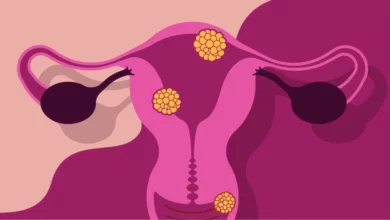Attention Girls: These Are The First Two Symptoms Of Ovarian Cancer Doctors Often Misdiagnose
Mrs. J.L., who works as a lunch lady in a Massachusetts school, is one of 23,000 American women who will get a dreaded diagnosis this year: ovarian cancer.
It’s the deadliest female malignancy.
Last week Mrs. J.L. (her initials are used to protect her privacy) was in an operating room at Massachusetts General Hospital while surgeons huddled over her abdomen, searching with their eyes and their fingers for tumors.
Surgeon Linda Duska says Mrs. J.L.’s cancer was widespread by the time doctors diagnosed it.
“When we first looked at her she had tiny spots, two or three millimeters of cancer, all through her entire abdomen,” Duska says. “And there were also bigger spots of cancer on her bladder, on her colon, behind her uterus.”
Unfortunately, this is typical. Eight out of 10 women with ovarian cancer have a widespread disease, called Stage III or IV. Their chances of cure are low.
The Silent Killer
For years, ovarian cancer was called a “silent” killer — causing no symptoms until it was too late to be cured. There’s no good screening test for ovarian cancer, like a Pap smear for cervical cancer or colonoscopy for colorectal cancer.
But in recent years, data from Dr. Barbara Goff at the University of Washington and other researchers have challenged the notion that early stages of ovarian cancer give no warning. Interviewing women after their diagnosis and comparing them with similar women without ovarian cancer, the researchers found the cancer patients often had suffered symptoms. But they weren’t recognized as signaling possible ovarian cancer.
That’s because the symptoms are common and unspecific — and they can point to a wide variety of underlying causes.
The Warning Symptoms
The most prominent warning symptoms for ovarian cancer Goff and her colleagues found are: bloating, pelvic or abdominal pain; difficulty eating or feeling full quickly; and a frequent or urgent need to urinate.
The key indicator, they say, is if such symptoms — alone or together — come out of the blue and persist, occurring almost daily for more than two or three weeks.
This summer, the Gynecologic Cancer Foundation and 19 other groups concerned with women’s health put out a consensus statement urging women and their doctors to pay serious attention to these early symptoms of what might be ovarian cancer.
Duska says the symptoms are often ignored or misinterpreted — while the cancer grows.
“We all have stories of months and months of (women) being worked up … colonoscopy and all sorts of other tests, before somebody figured out what was going on,” she says.
A Late Diagnosis
open next page to continue reading….




